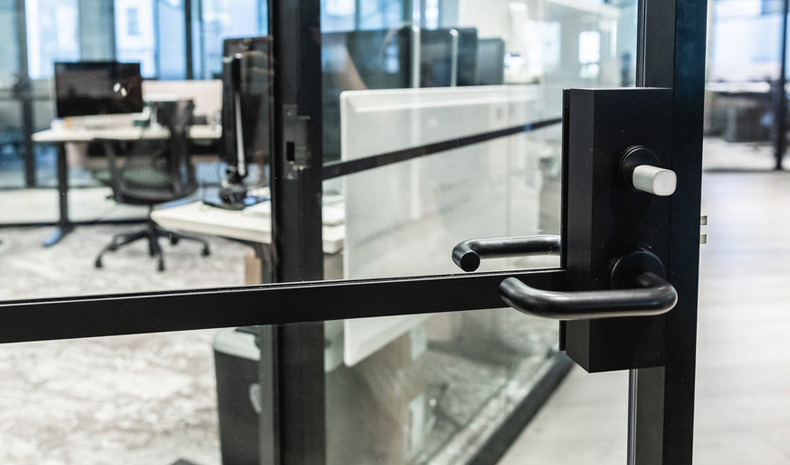Checking Out the Role of Gain Access To Control Solution in Enhancing Security Devices Effectiveness and Effectiveness
Accessibility control systems are increasingly identified as vital elements in the landscape of protection management, offering a structured strategy to control access to delicate areas and information. Their capability to incorporate with various safety innovations, such as surveillance cameras and alarm system systems, substantially boosts the overall effectiveness and efficiency of safety operations.
Comprehending Access Control Systems
Access control systems play an essential duty in ensuring the safety of various atmospheres, from company offices to sensitive federal government centers. These systems control who can get in or leave a designated location, thereby protecting properties and delicate info. The basic elements of gain access to control systems consist of authentication, consent, and recognition processes.
Recognition includes verifying an individual's identification, normally through credentials such as vital cards, biometric data, or passwords. Once determined, authentication verifies the person's right to gain access to, typically through multi-factor verification approaches to enhance safety. Last but not least, permission figures out the degree of gain access to approved, enabling set apart permissions based on roles within the organization.
Gain access to control systems can be categorized into 2 main types: logical and physical. Physical access control relate to concrete locations, while logical gain access to control regulates electronic info systems. Both types function synergistically to offer thorough security options.
Combination With Safety Technologies
The integration of accessibility control systems with other protection technologies is important for developing an all natural safety setting. By combining access control with video monitoring, intrusion detection, and security system, companies can enhance their general security stance. This interconnected structure allows for real-time monitoring and rapid response to security incidents, boosting situational recognition and operational effectiveness.
As an example, integrating gain access to control with video clip surveillance makes it possible for safety workers to validate access occasions aesthetically, making sure that just authorized people are granted entry. In a similar way, when gain access to control systems are linked to alarm systems, any type of unauthorized accessibility attempts can set off instant informs, triggering swift action.
Moreover, the integration of access control with cybersecurity actions is increasingly crucial in safeguarding sensitive information and physical possessions. By straightening physical safety protocols with IT safety systems, companies can ensure that both physical and digital accessibility points are checked and controlled successfully.
Advantages of Improved Security Workflow

In addition, enhanced security procedures assist in real-time surveillance and case reaction. With integrated systems that incorporate surveillance electronic cameras, alarm systems, and accessibility controls, protection groups can promptly recognize and resolve potential risks. This proactive strategy enables for timely interventions, minimizing the possibility of security breaches and possible losses.
Furthermore, reliable safety and security procedures add to a culture of security within the organization. Employees are likely to really feel more protected when they know that robust actions remain in area, resulting in increased spirits and performance. Furthermore, the usage of data analytics from gain access to control systems enables organizations to assess safety and security fads, enhance policies, and allocate resources effectively.
Factors To Consider and challenges

Additionally, companies need to address the capacity for data breaches. Gain access to control systems commonly handle sensitive info, and any susceptabilities could reveal this data to unapproved access. access control systems manufacturers. Ensuring robust cybersecurity procedures is important to protect versus such threats
User training is another critical consideration. Staff members should comprehend how to utilize access control systems effectively, as inappropriate use can bring about security voids. Companies need to balance safety and security with customer convenience; overly limiting accessibility can prevent performance and lead to workarounds that endanger security methods.
Conformity with lawful and regulative needs is likewise critical. Organizations needs to guarantee that their accessibility control systems fulfill sector requirements and local legislations, which can vary considerably. Lastly, the ongoing maintenance and monitoring of these systems require specialized resources, making it crucial for organizations to assign ideal budget plans and workers to make sure long-term performance and effectiveness.

Future Fads in Accessibility Control
Preparing for the future of gain access to control exposes a landscape progressively shaped by technical innovations and advancing safety and security demands. One substantial fad is the integration of expert system (AI) and artificial intelligence, which improve decision-making abilities and automate danger discovery. These innovations permit real-time evaluation of access patterns, enabling more receptive and flexible safety actions.
Biometric verification is additionally obtaining traction, with advancements in fingerprint, face acknowledgment, and iris scanning innovations using enhanced protection and customer comfort. As these systems end up being much more economical and innovative, their adoption throughout various fields is expected to increase.
One more emerging trend is the shift in the direction of cloud-based gain access to control systems. These options provide scalability, remote administration, and centralized information storage space, allowing companies to simplify operations and boost performance.
Additionally, the Net of Things (IoT) is readied to reinvent accessibility control by enabling interconnected tools to interact and share data, therefore enhancing situational understanding and security responsiveness.
Conclusion
In verdict, access control systems considerably improve the effectiveness and efficiency of safety and security devices by facilitating exact identification, authentication, and authorization processes. While obstacles and factors to consider exist, the recurring evolution of access control modern technologies promises to additional enhance safety and security operations.
Access control systems are increasingly identified as essential components in the landscape of protection administration, supplying an organized approach to control accessibility to delicate areas and information. Physical gain access to control pertains to tangible places, while logical access control governs digital information systems.The combination of access control systems with various other safety technologies is essential for developing an alternative safety setting. Gain access to control systems usually handle delicate information, and any kind of vulnerabilities might reveal this information to unapproved accessibility. Organizations must stabilize safety with user convenience; extremely restrictive accessibility can prevent efficiency and lead to workarounds that endanger safety procedures.